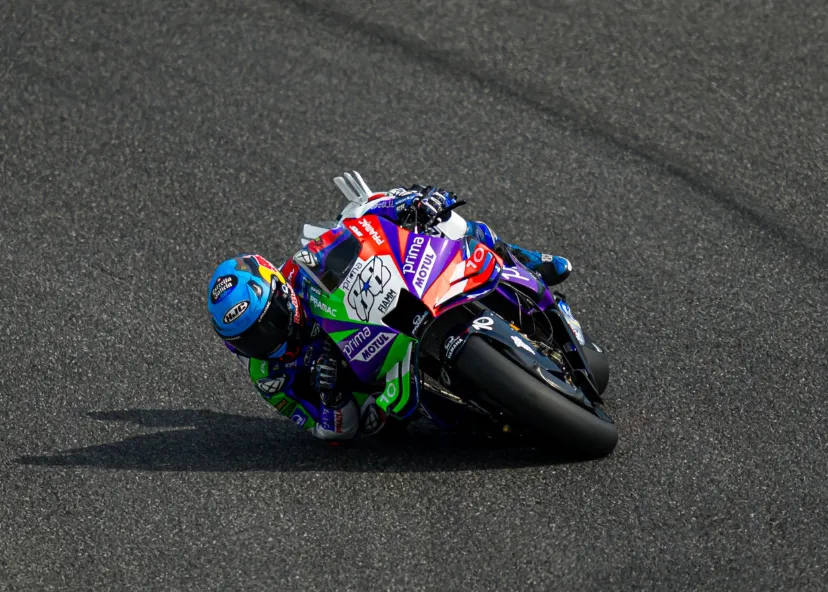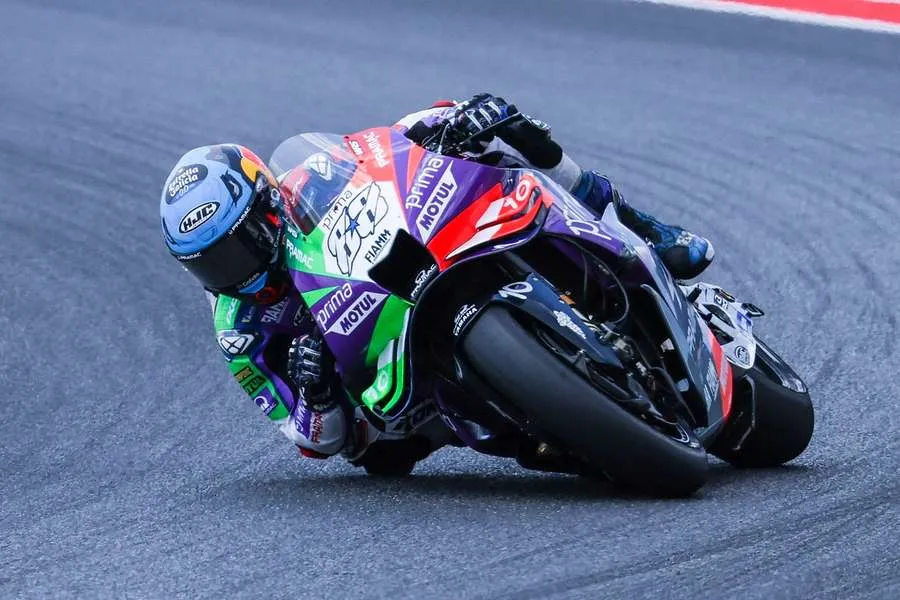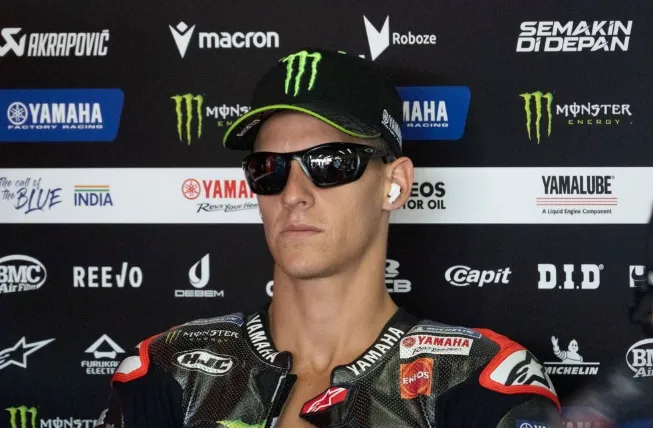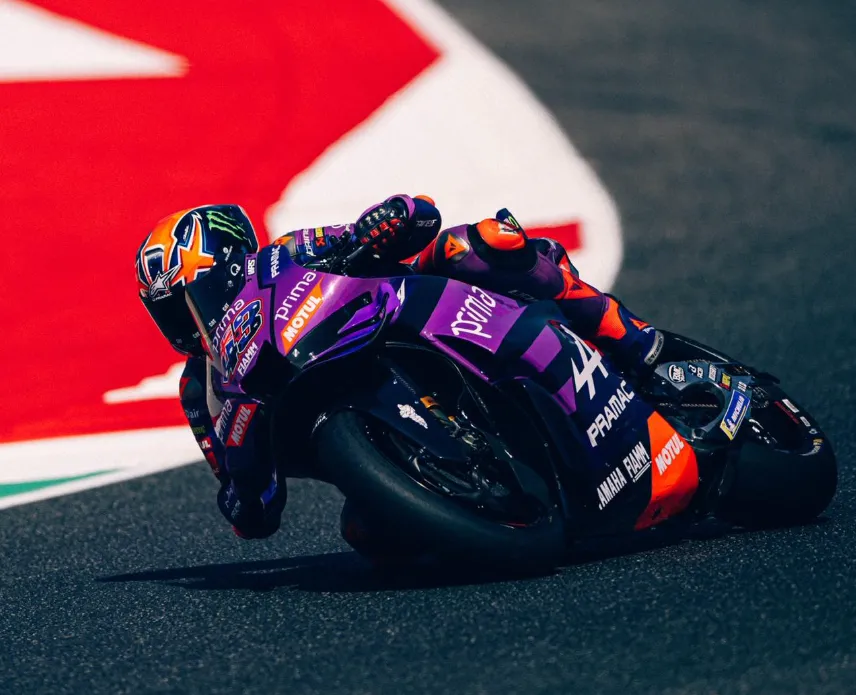

The new device… is a disaster? Miguel Oliveira reveals ‘terrifying vibrations’ throughout the race
Miguel Oliveira’s Italian Grand Prix weekend may not have ended in a crash or dramatic incident, but it was anything but smooth. The Portuguese rider endured one of the more technically frustrating races of his 2025 campaign, with relentless vibrations compromising both his pace and confidence throughout the sprint and main race at Mugello.
Oliveira, who finished 13th in Saturday’s sprint and couldn’t break into the top 10 on Sunday either, revealed that the issue had become so severe that riding the bike effectively became an exhausting, almost unmanageable task.
“Yeah. I had it a little bit yesterday with a new tire, but with the new tire on the time attack, you more or less manage this. But over the laps in the race, it’s quite a different story, and it’s nearly impossible to ride,” he told reporters post-race.
These words paint a stark image: a rider not fighting the competition, but instead fighting his own machine just to stay in the race.
Unwanted Déjà Vu: The Aragón Connection
What makes Oliveira’s Mugello experience even more troubling is that it’s not isolated. The Trackhouse Yamaha rider traced the root of the problem back to an earlier race in Aragón, where he felt a similar kind of high-frequency vibration — often referred to as chatter — that severely affects stability and front-end feel.
“We did have it a little bit in Aragón already. So, yeah, we’ll see,” he said, clearly concerned by the recurrence of an issue that the team had not fully addressed.
In MotoGP, such feedback isn’t just rider preference — it can spell the difference between control and catastrophe. With Mugello’s high-speed corners and undulating terrain, any slight instability is amplified, making the vibration issue even more critical.

The Bigger Yamaha Picture: When One Bike Struggles, All Suffer
Oliveira’s problems aren’t happening in a vacuum. Yamaha’s entire lineup struggled at Mugello, with no rider finishing in the top 9 during Saturday’s sprint. Fabio Quartararo, the top Yamaha rider, only managed 10th while also complaining of chatter and tyre degradation.
It suggests the vibration issue may be less about rider-specific setup and more about a fundamental flaw in Yamaha’s 2025 package. Whether it’s aerodynamics, chassis stiffness, or tyre interaction, something in the DNA of the bike isn’t working across race distance — and it’s affecting multiple riders.
That reality makes Oliveira’s weekend even more disappointing, especially given his typically smooth riding style and analytical approach, which have made him a reliable presence in the midfield battle.
Strategic Equipment Decisions: A Calculated Approach
While vibration was the dominant story, Oliveira also offered insight into his equipment decisions, particularly his choice to opt out of using Yamaha’s new rear wing during the race. Although he tested it during qualifying and said the numbers indicated minimal difference, he didn’t feel it brought any significant benefit.
“Yeah I did, but no I didn’t race it because I wanted to get it out of the equation even if the numbers say it should be very similar,” he explained.
Oliveira’s decision is emblematic of a rider who values consistency and comfort over untested variables, even if the engineering data says otherwise.
“I was just not comfortable enough to go with it and actually find something that was a true positive step forward, so I just decided to stay with the standard one.”
In a sport where milliseconds count and technological upgrades are constantly being introduced, Oliveira’s restraint highlights the psychological aspect of rider setup. Confidence in your machinery can sometimes matter more than a theoretical gain in performance — and in this case, Oliveira wasn’t willing to risk losing feel for a setup he didn’t fully trust.
Vibrations vs. Time Attack: A Tale of Two Bikes
One of Oliveira’s most revealing comments came when he compared the time attack setup in qualifying to the full-race experience. While the bike remained mostly manageable for a single flying lap with a new tyre, the story changed entirely once race conditions set in — especially with tyre degradation in play.
The Portuguese rider illustrated an all-too-familiar dilemma for MotoGP competitors: a bike that works on Saturday often doesn’t work on Sunday. Track temperature, rubber build-up, and even fuel load can drastically change how a bike behaves. For Oliveira, it meant a gradual unraveling of race pace with no solution in sight.
This is a concerning revelation for Yamaha, whose riders continue to struggle with bike balance and consistency over race distance — a problem they’ve battled for the past two seasons.
The Psychological Toll of Recurring Issues
Beyond the technical implications, there’s also the question of morale. Oliveira’s calm demeanor masks what must be growing frustration. Being unable to trust your equipment lap after lap slowly chips away at a rider’s aggressiveness, creativity, and willingness to take risks.
Each race becomes less about challenging others and more about survival. And for Oliveira, a rider once considered a podium regular with KTM, this reality is far from what he expected when he signed onto Yamaha’s satellite squad.
His diplomatic tone hides the seriousness of his situation: without a meaningful turnaround, he — like Quartararo — risks stagnation in the standings, regardless of personal talent.
Looking Ahead: Can Assen Offer a Reset?
With Assen — the Dutch TT — next on the calendar, Oliveira expressed cautious optimism. The cooler temperatures and smoother layout may play better to Yamaha’s characteristics, potentially reducing the severity of vibration and grip drop-off.
“Assen could be different if it’s cooler,” he mentioned, joining other riders in hoping that the iconic circuit provides a cleaner slate.
Still, hope won’t be enough. Yamaha engineers will need to investigate the recurrence of vibrations, fine-tune setup ranges, and possibly even rethink component configurations to prevent this issue from becoming endemic.
Oliveira’s racecraft, smooth throttle input, and braking finesse give him a unique toolkit. But even the most precise rider can’t outperform a bike that fundamentally doesn’t respond well over distance.
A Rider with Patience and Perspective
What stands out about Miguel Oliveira is his ability to communicate issues constructively without dramatics. Where some riders might lash out or shift blame, Oliveira consistently offers thoughtful analysis and long-term vision.
His decision not to use the new rear wing isn’t just about discomfort — it’s about understanding what builds lasting performance, not just a one-off fix. In a sport dominated by short-term results and aggressive upgrades, his mindset is rare and admirable.
He’s not just racing the stopwatch. He’s racing to build something sustainable, both for himself and for Yamaha’s future.

Final Thoughts: A Frustrating Yet Revealing Weekend
The Mugello round of the 2025 MotoGP season might not go down as a highlight in Miguel Oliveira’s career, but it offered a window into the complex dance between rider, machine, and conditions. From unrideable vibration to setup restraint and intelligent race management, Oliveira once again showed why he remains one of the paddock’s most respected figures.
His experience underscores one of MotoGP’s core truths: talent alone isn’t enough. The best riders need the best tools — or at least reliable ones — to compete at the sharp end.
As the season continues, the story of Miguel Oliveira will be one worth following — not just for results, but for the resilience and insight he brings to one of the most challenging eras in Yamaha’s racing history.



















Post Comment